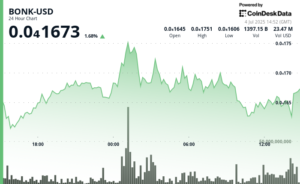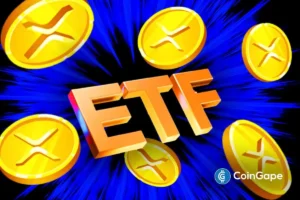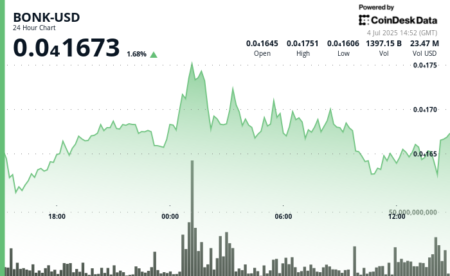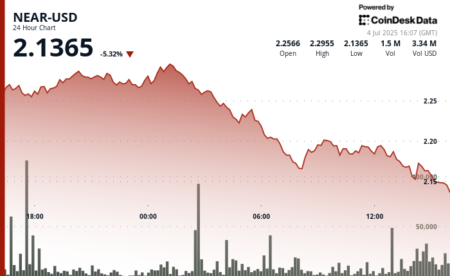Bitcoin Whale Awakens: Major BTC Movement and What It Means for the Market
In a remarkable turn of events, an ancient Bitcoin whale has reactivated after 14.4 years, transferring a staggering 20,000 BTC—equivalent to a jaw-dropping $2.18 billion—to new wallets. This event has garnered significant attention in the cryptocurrency community, particularly as Bitcoin [BTC] approaches its all-time high (ATH). Both long-term and short-term holders are witnessing impressive profits, yet the shifting tides of coin ownership bring both excitement and caution.
Bitcoin’s price journey has been phenomenal, with the cryptocurrency once valued at just $0.78. This whale initially invested $15,610 to acquire a substantial amount of BTC, leading to an astounding 139,606x return on investment. The fact that these coins have not been sent to an exchange but rather to newly created wallets suggests that the whale either has plans for a strategic exit or is re-positioning to better capitalize on market conditions. This unusual activity raises questions about the implications for other market participants.
Interestingly, despite the recent movements from these dormant coins, the trend indicates that more Bitcoin is being held than actively traded. Recent data from Bitbo shows that dormant coins and total unspent Bitcoin have surged to a notable 19.9 million BTC. This increase typically signifies strong investor conviction to hold assets, regardless of market volatility. With long-term holders (LTHs) maintaining their positions, supply pressure builds, potentially setting the stage for upward price movement.
So, who is primarily selling in this dynamic landscape? Analysis of Bitcoin’s average dormancy indicates that younger coins are exiting the market rather than older ones. CryptoQuant data highlights that the average dormancy has decreased to 21.5, which suggests a growing activity among newer investors. This trend contributes to a positive Exchange Netflow, which measures the balance of Bitcoin being deposited and withdrawn from exchanges. Notably, on July 4, Exchange Netflow surged to 836.4 BTC, indicating that more investors are depositing Bitcoin, likely to take profits following its climb to $110,000.
While short-term holders are becoming more active in selling their holdings, long-term investors appear resolute. The movement of ancient or long-dormant coins often sparks concern among market participants because their sale could exert significant downward pressure on Bitcoin’s price. However, in this case, the transition of these coins to private wallets rather than exchanges appears to alleviate immediate fears. Market watchers remain vigilant; if these coins do eventually make their way onto exchanges, it could coincide with short-term holders cashing out, leading to a possible dip in prices.
In summary, the recent awakening of the Bitcoin whale has captured vast attention and presents a fascinating microcosm of the larger Bitcoin market. While the movement of ancient coins can induce anxiety, the current landscape shows a stronger tendency for investors, particularly LTHs, to hold their assets. The critical question remains: will these coins be sold, or will they reinforce market stability? With Bitcoin navigating through various price points, all eyes will be on how market participants react in the coming days and weeks. With the potential for a retracement to its $105,000 support level or a rebound towards the $110,000 mark, this unfolding drama within the cryptocurrency sphere continues to captivate both seasoned investors and newcomers alike.

















